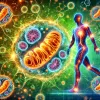Welcome back to our regular feature where we sift through thousands of new, health-related papers, and pick a few to summarize in a practical, simple, and not anxiety-inducing way.
Our main questions on each paper:
- In simple language, what does it say?
- Does it have good evidence?
- Should what it says matter to normal people?
- What simple thing, if anything, could a normal person do to take advantage of this finding?
Okay, away we go. And, as always, we rate each paper for practicality and level of interest, but we are mostly focused on finding ways to simplify findings. And more than anything else, we want to avoid over-optimization, so if a paper is telling you down to the minute how much sunlight to get at dawn, or that you should only drink coffee during eclipses, we are outta there.
This edition's articles and papers:
- Acute Vigorous Exercise Decreases Subsequent Non-Exercise Physical Activity and Body Temperature Linked to Weight Gain | bioRxiv https://www.biorxiv.org/content/10.1101/2023.10.25.563892v2
- The association between hyperuricemia and coronary artery calcification development: A systematic review and meta‐analysis - PMC https://www.ncbi.nlm.nih.gov/pmc/articles/PMC6837029/
- Continuous glucose monitoring and intrapersonal variability in fasting glucose | Nature Medicine https://www.nature.com/articles/s41591-024-02908-9
- Recommendations for the Use of Dietary Fiber to Improve Blood Pressure Control | Hypertension https://www.ahajournals.org/doi/10.1161/HYPERTENSIONAHA.123.22575
Now, here are our takes on the papers:
Paper: Vigorous Exercise Leads to Weight Gain?
Practicality (2/5): 🏃♂️🏃♂️
Interest (4/5): 🏃♂️🏃♂️🏃♂️🏃♂️
Summary
The study investigates how intense exercise may paradoxically lead to weight gain in mice, not by increasing food intake but by decreasing non-exercise physical activity and body temperature. These changes appear linked to disruptions in the normal rhythms of a stress hormone, corticosterone. It suggests that the level of exercise intensity can influence weight in unexpected ways, refocusing the role of exercise in weight management.
What is the paper's main claim?
- Intense exercise may lead to reduced everyday activity and lowered body temperature, potentially causing weight gain.
- Vigorous exercise disrupts the normal daily patterns of activity and body temperature in mice, possibly due to stress hormone alterations.
Are the methods and/or data it uses appropriate and convincing?
- The use of activity monitors and the measurement of body temperature and hormone levels in mice provide a valid way of assessing the physical responses to different exercise intensities.
- The effect size and the clear differences between the sedentary, moderate, and vigorous exercise groups support the paper's claims, although these are mouse-model results and might not directly translate to humans.
What do we know now that we didn't know before, if anything?
- The study contributes to understanding that vigorous exercise alone may not result in the expected amount of weight loss and may even have opposite effects.
What simple and practical thing could a normal person do knowing this?
- It is mostly a reminder that weight loss happens in the kitchen, not on the bike or while out running.
- Cardiorespiratory fitness brings many benefits, but it is no magic pill for weight loss.
Paper: Uric Acid and Heart Risk
Practicality (5/5): 🏃♂️🏃♂️🏃♂️🏃♂️
Interest (4/5): 🏃♂️🏃♂️🏃♂️
Summary
High levels of uric acid (a waste byproduct excreted in urine) in the blood could predict the hardening of arteries in the heart, a condition known as coronary artery calcification (CAC). It concluded that people with high uric acid levels are significantly more at risk of developing CAC. The study is important because CAC is a known marker for heart disease and could lead to serious heart events.
What is the paper's main claim?
- High levels of uric acid in the blood (hyperuricemia) are strongly associated with an increased risk of developing and progressing CAC.
Are the methods and/or data it uses appropriate and convincing?
- The paper uses meta-analysis, pooling data from 11 studies with over 11,000 adults, providing a large sample for robust findings.
- The effect size is considerable; high uric acid levels are associated with an 80% increased risk of developing CAC, which suggests clinical importance.
What do we know now that we didn't know before, if anything?
- This study synthesizes existing data to provide stronger evidence that high uric acid levels could serve as a predictor for the development of CAC.
What simple and practical thing could a normal person do knowing this?
- Individuals with elevated uric acid levels might consider regular heart health monitoring to detect signs of CAC early.
- Reduce dietary purines can help, avoiding red meat, alcohol, and sweetened drinks.
Paper: Glucose Monitoring Variability
Practicality (5/5): 🏃♂️🏃♂️🏃♂️🏃♂️🏃♂️
Interest (4/5): 🏃♂️🏃♂️🏃♂️🏃♂️
Summary
The study investigates how fasting glucose levels vary day-to-day in people who do not have diabetes, using Continuous Glucose Monitoring (CGM) technology. The findings highlight that single fasting glucose measurements, which are commonly used to diagnose diabetes, are unreliable given variability. This variability could lead to misclassification of individuals' glucose regulation status.
What is the paper's main claim?
- The paper contends that fasting glucose measurements can vary significantly from day to day in the same individual, which might impact diabetes diagnosis.
- It suggests that single or double fasting glucose tests, as currently used in medical practice, may not be sufficient for accurate diabetes classification, citing a significant misclassification rate when additional measurements are considered.
Are the methods and/or data it uses appropriate and convincing?
- The large sample size (over 8,000 participants) and the use of CGM provide a strong dataset, but individual differences in factors such as meal logging accuracy could affect results.
- The effect size, reflected by the day-to-day glucose variability, is substantial enough to suggest that the current standard single fasting glucose tests leads to wide misdiagnosis in a clinical setting.
What do we know now that we didn't know before, if anything?
- The study illuminates the high variability of fasting glucose levels within individuals across different days, with perhaps 40% of people misclassified.
- If the findings reflect a common trend, they could ultimately alter how diabetes is diagnosed or monitored.
What simple and practical thing could a normal person do knowing this?
- Don't trust a single fasting blood glucose test, or even a couple.
- Avoid added sugars in all forms, as ever.
Paper: Fiber Lowers Blood Pressure
Practicality (5/5): 🏃♂️🏃♂️🏃♂️🏃♂️🏃♂️
Interest (4/5): 🏃♂️🏃♂️🏃♂️🏃♂️
Summary
This paper emphasizes the overlooked role of dietary fiber in managing high blood pressure (BP), a common and dangerous health issue. It presents evidence that adults should consume over 28 g/day for women and over 38 g/day for men of dietary fiber to significantly reduce BP, supporting heart health. Like feeding a garden to bloom healthily, incorporating enough fiber feeds our gut bacteria, producing beneficial compounds that lower BP.
What is the paper's main claim?
- Dietary fiber is crucial for lowering BP and preventing heart disease.
- Recommended daily fiber intake for adults with hypertension: >28 g/day for women, >38 g/day for men.
Are the methods and/or data it uses appropriate and convincing?
- Review of existing literature supports significant BP reduction with increased fiber intake.
- Large enough effect size to matter, with an estimate of systolic BP reduction by 2.8 mmHg and diastolic BP by 2.1 mmHg for every extra 5 g/day of fiber.
What do we know now that we didn't know before, if anything?
- Specific fiber intake targets for adults with hypertension are established, advancing guidance on dietary modifications.
What simple and practical thing could a normal person do knowing this?
- Increase fiber intake to meet or exceed the specified targets.
- Minimum daily recommendation is 28 g/day for women and >38 g/day for men, Most people come nowhere close, so try harder.
Back next week with thoughtful and simplifying takes on papers getting attention. And if you see anything you want us to look at, let us know.





